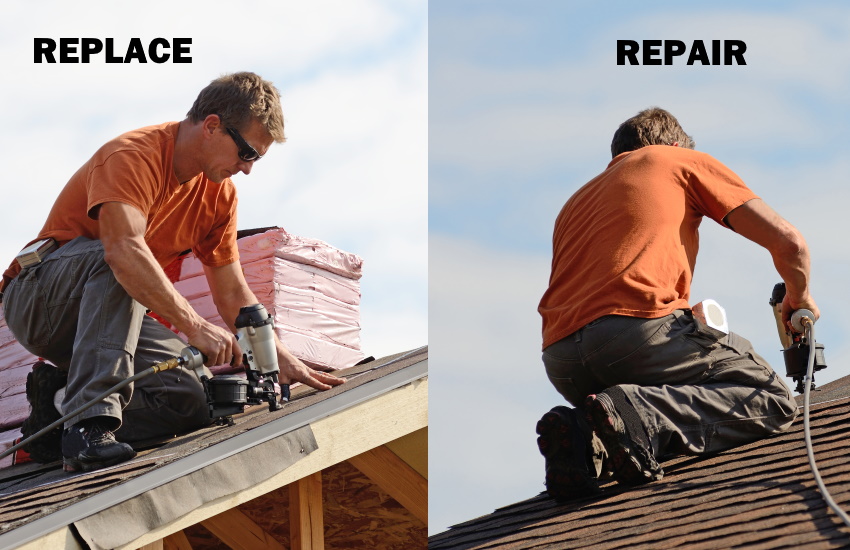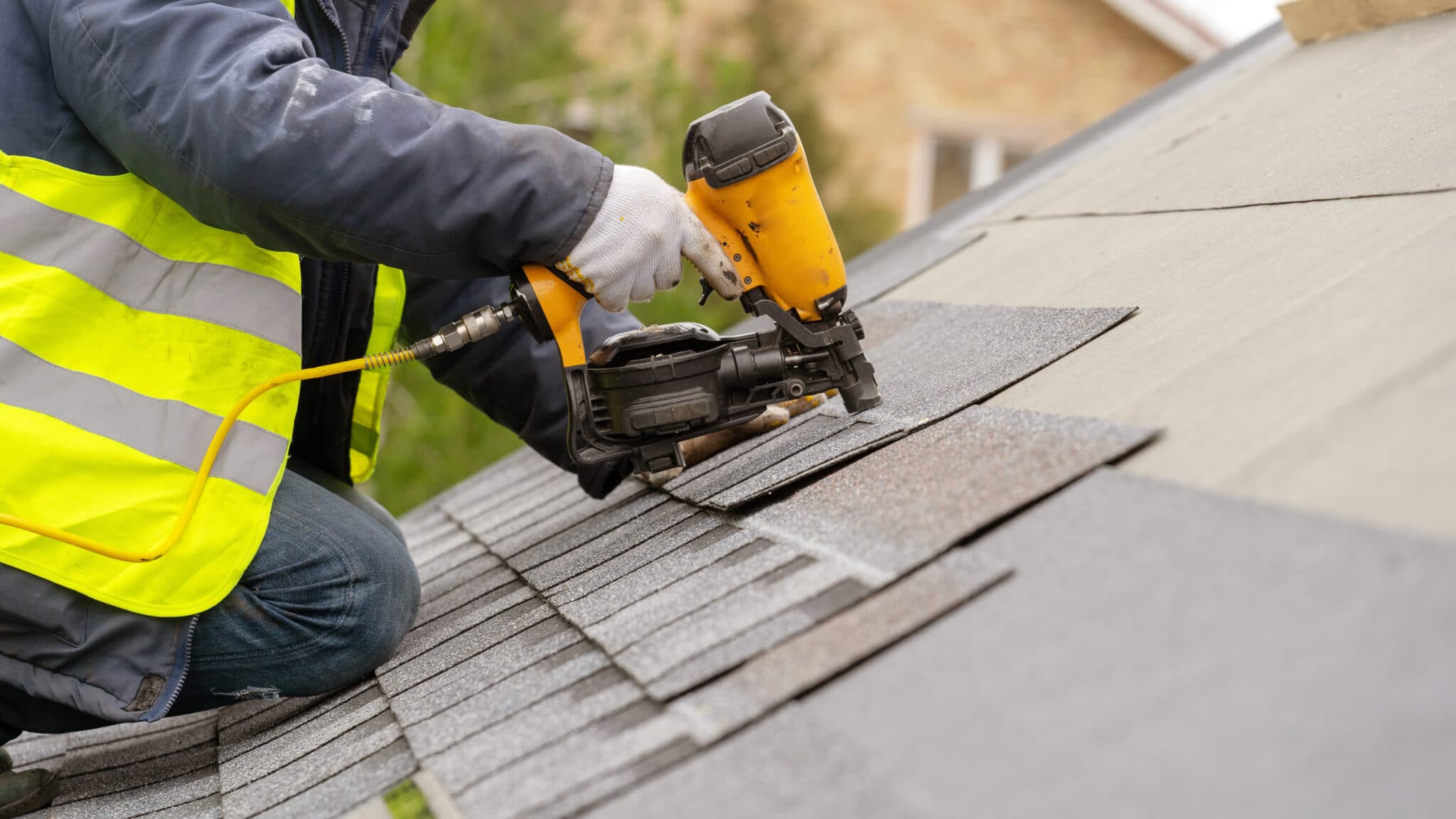Roofers Oahu: Proficient Specialists for Roof Installations and Repair Works
Roofers Oahu: Proficient Specialists for Roof Installations and Repair Works
Blog Article
Recognizing the Different Types of Roofing Systems: A Comprehensive Overview for Homeowners
In the realm of homeownership, picking the proper roof covering style is a decision that brings substantial implications for both capability and aesthetic charm. With a range of options-- ranging from the typical gable to the modern flat-- each type offers distinct advantages and obstacles that ought to straighten with the home owner's ecological factors to consider and details demands. Understanding these differences not only help in making an enlightened option however also influences long-lasting maintenance and power performance. As we discover the intricacies of different roofing kinds, it comes to be evident that one dimension does not fit all; the best selection may stun you.
Gable Roof Coverings
Gable roofs, defined by their triangular shape, are amongst the most prominent roof styles because of their simpleness and performance in losing water and snow. This style features 2 sloping sides that satisfy at a ridge, allowing for effective water drainage and reducing the risk of water build-up. The high pitch generally connected with gable roofings boosts their capability to deal with hefty rainfall, making them appropriate for various climates.
In addition to their useful benefits, saddleback roofs use visual versatility. They can be adjusted to numerous building styles, from typical to contemporary homes. The style can likewise accommodate extra functions such as dormer home windows, which enhance all-natural light and air flow in the attic area.
Moreover, gable roof coverings give ample room for insulation, adding to energy performance. Home owners can select from a range of roof products, including asphalt shingles, steel, and floor tiles, further boosting customization alternatives.
Regardless of their advantages, saddleback roofs might call for added assistance in areas vulnerable to high winds or hefty snowfall. In general, the saddleback roof continues to be a popular selection because of its blend of performance, toughness, and aesthetic charm.
Apartment Roofs
Level roofing systems are usually recognized for their minimal design and useful applications, specifically in business and industrial settings (oahu roofing). These roofs feature a virtually straight or straight surface area, which allows for easy building and flexible area usage. While they might lack the visual allure of angled roofs, level roofs offer countless advantages, specifically in metropolitan environments where making the most of area is important
Among the primary benefits of flat roofs is their accessibility. Home owners can make use of the roofing system area for numerous objectives, such as rooftop yards, balconies, or solar panel setups. Additionally, flat roof coverings are commonly more cost-efficient to maintain and mount compared to their sloped counterparts, as they need fewer products and labor.
Nonetheless, level roof coverings do present specific obstacles. Appropriate drainage is necessary to stop water pooling, which can cause leakages and structural damage. Hence, choosing high-grade waterproofing products and routine assessments are important for making certain long life. Common products used for level roofs consist of built-up roofing (BUR), customized asphalt, and single-ply membrane layers, each offering distinct benefits. In general, flat roofs function as a versatile and useful selection for lots of property owners and businesses alike.
Hip Roof Coverings
Hip roof coverings are characterized by their sloped sides that assemble on top, developing a ridge. This design is distinct from gable roofs, as all 4 sides of a hip roof covering slope downwards toward the wall surfaces, providing a more steady structure. The angle of the slopes can differ, allowing for adaptability in building looks and functionality.
One of the primary benefits of hip roofing systems is their ability to withstand heavy winds and negative climate condition. The sloped surface areas enable much better water drain, minimizing the threat of leakages and water damage. Furthermore, hip roofings offer enhanced attic room space, which can be made use of for storage or perhaps exchanged livable locations.
However, creating a hip roof covering can be much more intricate and pricey than simpler roof types, such as saddleback roofs. The added product and labor associated with creating the inclines and making sure correct structural stability can cause greater expenditures. Regardless of these disadvantages, lots of home owners favor hip roofings for their sturdiness, visual appeal, and capacity for power performance.
Mansard Roof Coverings
Mansard roofings, usually recognized by their one-of-a-kind four-sided style, attribute 2 slopes on each side, with the lower slope being steeper than the top. This architectural style, originating from France in the 17th century, is not just aesthetically attractive look at this site yet practical, as it takes full advantage of the functional room in the top floorings of a building. The high reduced slope permits more clearance, making it a suitable selection for loft spaces or attic rooms, which can be transformed into living areas.
Mansard roofings are defined by their adaptability, suiting numerous building styles, from traditional to modern. They can be built with various materials, consisting of asphalt roof shingles, slate, or steel, providing home owners with an array of alternatives to fit their budget plans and preferences. Furthermore, the design allows for the combination of dormer windows, improving natural light and air flow in the top levels.
Nevertheless, it is important to think about the potential drawbacks. Mansard roofing systems might call for even more upkeep because of the complexity of their style, and their steep slopes can be challenging for snow and rainfall overflow. Overall, mansard roofing systems incorporate beauty with practicality, making them a prominent choice amongst home owners looking for distinct architectural functions.
Dropped Roof Coverings
As home owners increasingly look for simplicity and functionality in their architectural layouts, shed roofings have become a preferred option. Identified by a single sloping plane, a shed roofing presents a minimalist visual that complements numerous home styles, from modern to rustic.
One of the main advantages of a shed roof is its uncomplicated construction, which often converts to lower labor and product expenses. This layout enables for reliable water drain, decreasing the danger of leakages and water damages. Additionally, the vertical slope provides sufficient room for skylights, improving natural light within the interior.
Lost roof coverings additionally use convenience in terms of use. They can be effectively incorporated right into additions, garages, or exterior structures like sheds and structures. Moreover, this roofing system design can accommodate various roof products, consisting of metal, asphalt tiles, and even green roofing systems, straightening with environmentally friendly efforts.
Nevertheless, it is necessary to think about local climate conditions, as hefty snow loads might demand modifications to the roof covering's angle or structure. Generally, shed roofings present a sensible and visually pleasing choice for property owners aiming to make best use of functionality without compromising design.
Verdict


Gable roofings, identified by their triangular form, are amongst the most our website popular roof covering styles due to their simplicity and efficiency in losing water and snow. oahu roofing. The steep pitch generally linked with gable roofings improves their ability to deal with heavy precipitation, making them ideal for different environments
While they might lack the visual appeal of pitched roofing systems, flat roofing systems offer countless advantages, particularly in metropolitan atmospheres where optimizing room is important.

Report this page